Order Passeriformes Higher classification Poephila | Phylum Chordata Family Estrildidae Scientific name Poephila cincta Rank Species | |
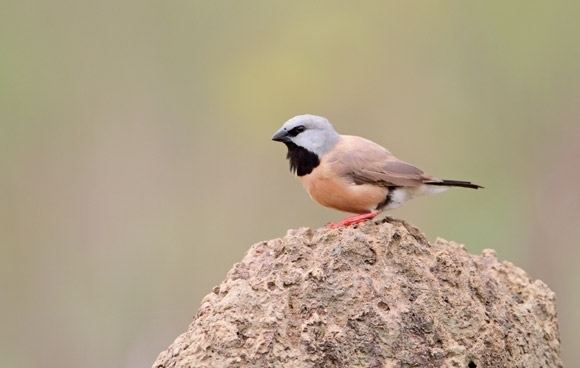 | ||
Similar Bird, Long‑tailed finch, Poephila, Masked finch, Plum‑headed finch | ||
Black throated finch
The black-throated finch (Poephila cincta), or parson finch, is a species of estrildid finch found in grassy woodlands throughout north-east Australia from Cape York Peninsula to north-east New South Wales. It is declining and its habitat is threatened by development.
Contents
- Black throated finch
- Black throated finch montage
- Taxonomy
- Subspecies
- Description
- Distribution and habitat
- Threats
- Behaviour
- Feeding
- Breeding
- Aviculture
- Origin
- References

Black throated finch montage
Taxonomy
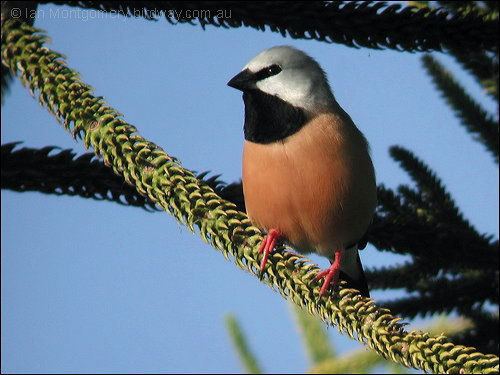
Originally described by ornithologist John Gould in 1837, its specific epithet is Latin cincta "girdled". It is placed in the Australo-papuan finch family Estrildidae, although this family itself was previously placed in the sparrow family Passeridae.
A genetic study published in 2005 showed that it diverged from the long-tailed finch (P. acuticauda) 600,000 years ago.
Parson finch is an alternate common name.
Subspecies
The black-throated finch has two subspecies, with intermediate forms found between the two.
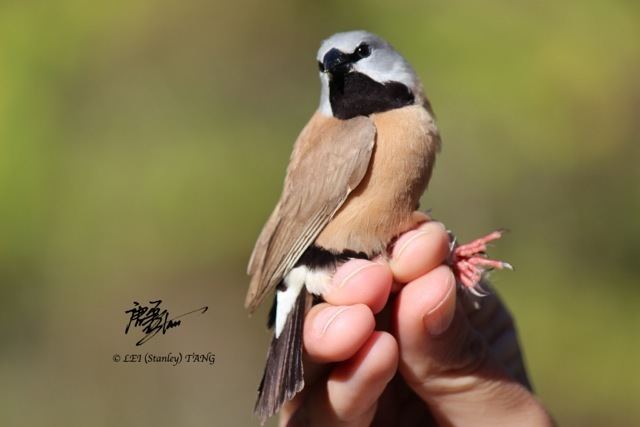
Description
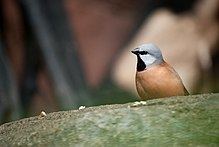
Measuring around 10 cm (4 in) in length, the black-throated finch has a short black bill, lores, and throat, sharply delineated from the rest of the pale grey head. The wings, breast and belly are pale pinkish brown, and the short tail is black, while the rump is black in northern forms and white in southern.
Distribution and habitat
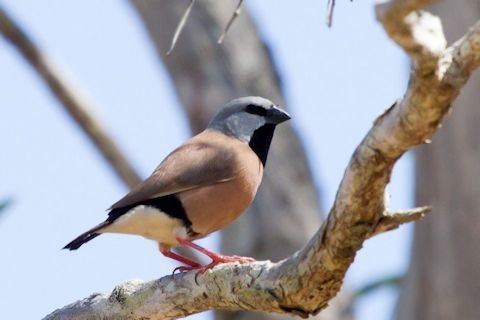
The black-throated finch was traditionally found from Cape York south through eastern Queensland and into north-eastern New South Wales in the vicinity of Tenterfield, however it has not been recorded in New South Wales since 1994. It is sedentary or locally nomadic. It is found in grassy open forested habitats, generally near bodies of water such as rivers.
Threats
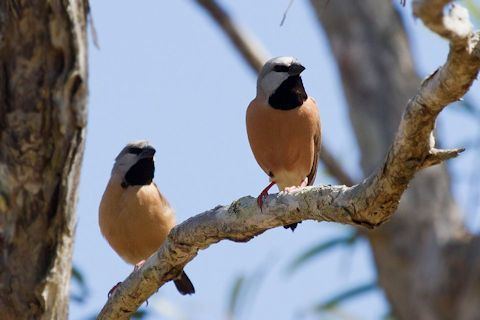
For the past few decades, the population of this species has declined; the southern subspecies has been declared threatened in New South Wales, and vulnerable in Queensland, and appears to have vanished from 80% of its former range. The reason for the declined population is probably due to spread of pastoralism, changes in fire regime and increases in the density of native woody weeds in grassy savannahs. A national management plan was published in 2004 by the New South Wales and Queensland governments.
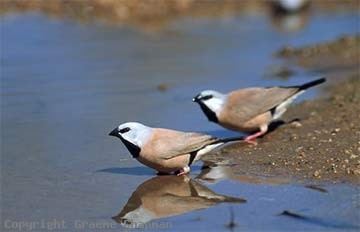
Much of the remaining population is located near Townsville, and there have been issues with development encroaching on suitable habitat.
Behaviour
The black-throated finch is found in flocks of up to 30 birds.
Feeding
The black-throated finch primarily eats seed from various species of grass, and also eats spiders and ants. In the wet season, birds also hunt flying termites.
Breeding
Breeding may occur from September to January in the southern parts of its range, and after the monsoon season in February onwards in the north. One or two broods are laid during this time. The nest is a round structure woven from dried grasses with tube-like entrance placed high in a eucalypt 5 metres above the ground. Four to six matte white oval eggs are laid, measuring 12 x 17 mm.
Aviculture
The species breeds and survives readily in captivity.
Origin
Origin and phylogeny has been obtained by Antonio Arnaiz-Villena et al. Estrildinae may have originated in India and dispersed thereafter (towards Africa and Pacific Ocean habitats).
